The CCC in Acadia National Park
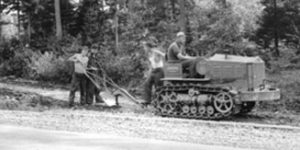
During the Great Depression, the Civilian Conservation Corps played a critical role in the ongoing development of the national park system. The “CC’s” (as they often are called here in Maine) or CCC’s operated three camps in the vicinity of Acadia National Park, where in addition to general forest management, workers built campsites, trails, dams, and other structures, some of which still stand. In order to learn more about this important period in Acadia’s history, the National Park Service contracted with the Maine Folklife Center to conduct oral history and documentary research on CCC activity relating to the park. MFC director James Moreira, Anu Dudley, Pamela Dean, and Kevin Champney interviewed CCC alumni and searched the records of Acadia National Park and the CCC. Research focused on the projects undertaken by the CCC, but also included a social history of life in the camps and the relations between the camps and nearby towns.
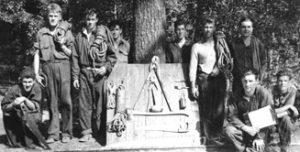
The Civilian Conservation Corps grew from the Emergency Conservation Work Act, which President Franklin D. Roosevelt signed into law on March 31, 1933. Through the program, a quarter of a million people between the ages of 18 and 25 would be inducted into camps scattered across the country and put to work on a variety of forest management projects on national, state, and, private lands. Detractors dubbed it “Roosevelt’s Tree Army” and said it would not work. They claimed that unemployed youths, especially those from urban areas where unemployment was most severe, would balk at the idea of living in camps under military rules and working as junior foresters. But by the end of June, 250,000 people had been recruited (the ranks would eventually swell to half a million). The CCC would become one of the most popular and far-reaching programs of the New Deal era. By the summer of 1942, when Congress refused to extend it any further, the CCC had provided shelter, food, employment and family support for over three million men in over 4,500 camps nationwide.
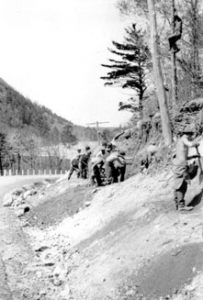
Over the history of the program, the CCC operated twenty-eight camps in Maine. Those devoted entirely to forest management work – fire protection or insect and disease control – fell mainly under the direction of either the National Forest Service or the Maine Forestry Division. The work of other camps, however, included projects aimed at recreational forest use, and for the most part, they were supervised by the National Park Service. Three camps – CCC Company 154, Eagle Lake, Co. 158, Southwest Harbor, and Co. 193, Ellsworth – contributed directly to the development of Acadia National Park. Three others – Co. 130, Millinocket (Baxter State Park); Co. 1123, Millinocket (also at Baxter Park); and Co. 1130, Camden Hills – were put to work on State recreational sites.
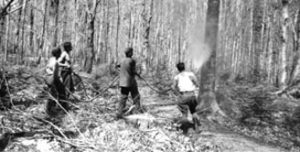
Most of the work in Acadia consisted of brush clearing, building fire breaks and access roads, and pest and disease control, but workers also built, extended, or improved many of the Park’s trails and completed much of the work on the Seawall campsite and a number of picnic areas. The Ellsworth camp, which existed for less than a year, engaged in clean-up and beautification along the roads leading into the Park.
I was 17 and all I had been doing was farm work and so forth, so I was just chosen as a laborer. If they needed work done . . . on Cadillac, either cutting trails or building roads, or whatever. To this day when I drive up the mountain, there’s a lot of the big stones along the road going up that we actually put there. So I remember all those things quite vividly.
– NA2624 Simon Caswell, September 5, 2000
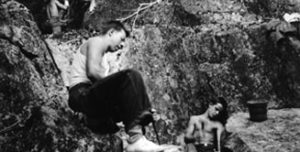
The history of CCC activity at Acadia is well documented in the park’s administrative records. MFC research assistant Kevin Champney visited the regional branch of the National Archives and Records Administration in Waltham, Massachusetts, and photocopied approximately 4,500 pages of documents. He also scanned 1200 photographs contained in the CCC reports. An additional 200 photographs were collected from our interviewees. Camp and local newspapers also provided useful information on camp life and camp-town relations. All of this material are part of Acadia National Park’s archives; the interview tapes and transcripts and the photographs are also available at the Northeast Archives of Folklore and Oral History.
-Jamie Moreira
